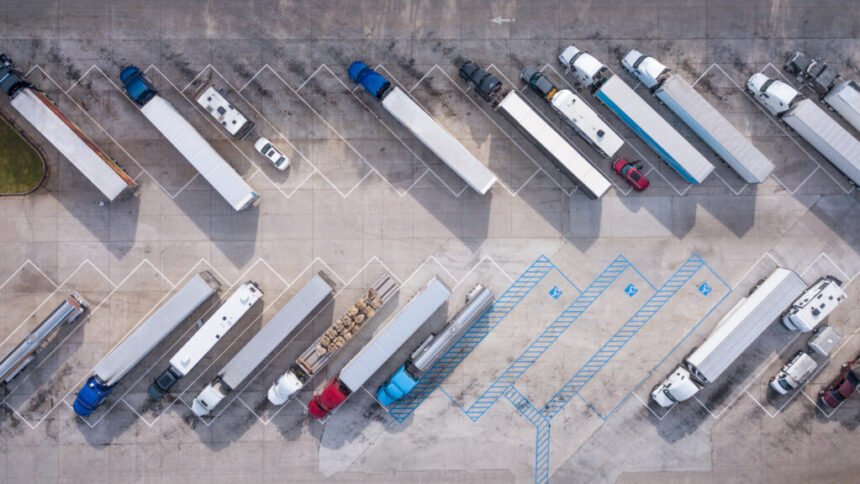In an age of growing e-commerce, just-in-time deliveries, and expanding logistics networks, one often overlooked but crucial component of the supply chain is where commercial trucks park. The trucking industry is the backbone of freight movement worldwide, yet drivers continue to face a daily challenge that affects efficiency, safety, and compliance—adequate parking.
While regulations tighten and delivery expectations rise, the lack of safe and accessible places for trucks to stop or rest is taking a toll on both drivers and fleet operators. This article explores the pressing need for efficient parking solutions for trucks, why it’s a national concern, and what can be done to solve the problem in a scalable, sustainable way.
- The Hidden Cost of Inadequate Parking for Trucks
For most people, parking is just an inconvenience. For truck drivers, it’s a matter of safety, earnings, and compliance. The consequences of failing to find a legal or safe space to park go beyond inconvenience.
Impact on Drivers:
- Driver Fatigue: Without proper rest stops, drivers may drive beyond legal hours, increasing the risk of accidents.
- Stress and Burnout: Constantly searching for a spot adds to the mental fatigue of long-haul work.
- Wasted Time: Every hour spent looking for parking is an hour lost in productivity.
Impact on Companies:
- Delivery Delays: If drivers are forced to stop early to secure a spot, shipments may arrive later than expected.
- Operational Costs: Idling while searching for parking burns fuel, increases wear on vehicles, and adds unplanned expenses.
- Regulatory Risks: Violations of Hours of Service (HOS) laws due to parking limitations can result in penalties.
Impact on Infrastructure:
- Illegal Parking: In absence of designated spots, trucks may park on ramps or shoulders, posing a danger to themselves and other vehicles.
- Community Complaints: Residential and commercial zones often push back against trucks using their streets for overnight stays.
- What Causes the Truck Parking Shortage?
There isn’t a single reason behind the shortage of parking for trucks—it’s a combination of urban planning, rising freight volumes, and policy gaps. Here are the primary drivers of the problem:
- Urban Growth Without Logistics Planning: Cities and suburbs expand, but often fail to account for the flow of goods and vehicles needed to support that growth.
- Limited Rest Area Expansion: Many public rest areas were built decades ago and have not scaled with the growth of commercial vehicle traffic.
- Real Estate Constraints: Building parking areas for trucks requires large plots of land, often close to industrial zones or highways—an expensive and rare combination.
- Zoning Laws and Restrictions: Even where land exists, local zoning regulations may prohibit truck-related infrastructure due to perceived noise, pollution, or congestion.
- Increased Demand from E-Commerce: Shorter delivery windows and rapid logistics models mean more trucks on the road, more frequently, and at more unpredictable times.
- The Role of Technology in Modern Parking Solutions
With the trucking industry under pressure, innovative solutions are emerging to make parking more efficient. Technology plays a vital role in bridging the gap between available spaces and drivers who need them.
Smart Parking Platforms:
Several companies are now developing or deploying mobile apps and digital platforms that help drivers locate, reserve, and pay for parking in advance. These apps are often connected to real-time databases that track space availability.
Sensors and IoT Devices:
Advanced parking lots are now incorporating sensors that can detect whether a space is occupied. This data is transmitted to cloud-based systems accessible by fleet managers or drivers in real time.
GPS and Routing Integration:
Some truck navigation systems now include parking availability as part of route optimization, allowing drivers to plan stops in advance based on proximity and availability.
Fleet-Level Optimization:
Fleet managers can reserve blocks of spaces across multiple locations for their drivers. This reduces uncertainty and allows better control over driver schedules.
Despite the promise of technology, adoption is still catching up, especially among independent drivers or small fleets that may not have access to integrated systems. Nevertheless, the trend is clear: digital solutions are the future of truck stop logistics.
- What Makes a Good Parking Facility for Trucks?
Not all truck stops or parking lots are created equal. The best facilities consider a mix of safety, accessibility, amenities, and proximity to highways or delivery points.
Essential Characteristics:
- Security: Surveillance cameras, gated access, lighting, and on-site personnel to ensure driver and vehicle safety.
- Space Design: Sufficient room for maneuvering large vehicles, especially for backing in and out safely.
- Amenities: Restrooms, showers, food options, and Wi-Fi can make a huge difference in driver well-being.
- Fuel and Maintenance Services: Co-locating with fuel stations or service shops adds convenience.
- Flexible Booking Options: Allowing for both reserved and on-demand spaces maximizes accessibility.
Investing in well-designed truck parking facilities is not just good business—it’s an essential public service that supports one of the economy’s most vital industries.
- Policy-Level Interventions and Public-Private Partnerships
The scale of the truck parking issue means it cannot be solved by any single stakeholder. Governments, private investors, logistics companies, and driver advocacy groups all need to be part of the solution.
Government Initiatives:
- Funding Infrastructure Projects: Grants and funds targeted at rest area expansion or new development.
- Zoning Reforms: Encouraging or fast-tracking approvals for logistics infrastructure within industrial zones.
- HOS Flexibility Pilots: Testing modified rules that allow drivers to pause their hours while searching for parking.
Public-Private Partnerships (PPPs):
Collaborations between states and private developers to build and operate parking facilities can accelerate the availability of spots while reducing taxpayer burden.
Community Outreach:
Education and outreach efforts can ease community concerns about having truck parking areas nearby, especially if they’re well-designed and managed.
- The Economic Case for Investing in Parking Infrastructure
When businesses or governments consider investing in infrastructure, truck parking might not be the flashiest item on the agenda—but it delivers measurable economic benefits.
Efficiency Gains:
When drivers aren’t wasting time looking for parking, deliveries are faster and more reliable. That’s a direct productivity boost.
Reduced Accidents and Insurance Costs:
Well-lit, secure parking lots reduce vandalism, theft, and fatigue-related crashes.
Driver Retention:
Facilities that improve driver comfort and well-being can lead to lower turnover, a significant cost-saving for fleets.
Increased Revenues for Local Businesses:
Parking facilities that include food, fuel, and services can generate new revenue streams and stimulate local economies.
In this light, truck parking isn’t a cost—it’s an opportunity.
- Sustainable and Future-Oriented Approaches
As sustainability becomes a central focus across industries, truck parking infrastructure must also evolve. Here are ways to make parking solutions more eco-friendly:
- Electric Vehicle Charging: With the rise of electric trucks, parking lots should include EV charging infrastructure.
- Green Building Practices: Using recycled materials, renewable energy, and eco-friendly drainage systems.
- Idle-Reduction Technologies: Offering plug-in stations so drivers can power cabs without idling.
- Shared Logistics Hubs: Combining parking with shared warehouse space, reducing empty miles and emissions.
These strategies ensure that parking solutions not only solve immediate needs but are aligned with long-term environmental goals.
- Steps for Fleet Operators to Improve Parking Strategies
While large-scale infrastructure requires time and investment, individual companies can take proactive steps today:
- Partner with Parking Networks: Subscribe to digital platforms that offer parking reservations and analytics.
- Train Drivers on Tech Tools: Ensure all drivers are aware of and comfortable using parking apps or GPS tools.
- Pre-Plan Routes and Stops: Incorporate planned parking into route planning to reduce last-minute scrambles.
- Monitor Utilization Data: Use telematics to understand where parking bottlenecks happen and adjust accordingly.
- Advocate for Policy Change: Join industry groups that push for better regulations and funding for parking infrastructure.
By treating parking as a key component of the logistics workflow, companies can improve operational efficiency and enhance driver satisfaction.
Final Thoughts
While often overshadowed by other concerns in logistics and transportation, truck parking in Hollywood is undeniably one of the most critical and complex challenges facing the industry today. It affects safety, efficiency, profitability, and sustainability. As freight volumes continue to rise, solving the parking shortage is not optional—it’s essential.
The use of modern tools, policy reform, better infrastructure design, and collaborative thinking will determine whether this challenge turns into a crisis or becomes a catalyst for innovation. Every stakeholder, from drivers to city planners to fleet managers, has a role to play in shaping a more functional and resilient system.
As solutions evolve, one thing remains clear: Truck Parking is no longer just a convenience—it’s a strategic necessity for the future of freight transportation.
For More Information, Visit Dotmagazine









